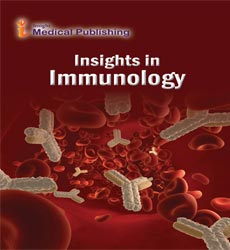Trending: Induced Pluripotent Stem Cells (iPSC) for Adoptive Cellular Immunotherapy
Abstract
The immune system is operated on the basis of checks and balances. Inflammatory Th1 and Th17 cells, in the process of fighting off pathogens, may hyper-react and cause damages to tissues. Regulatory T cells (Tregs), on the other hand, function to suppress exuberant immune reactivity and promote peripheral tolerance [1]. Tregs characteristically express high and stable level of the IL-2 receptor alpha chain (IL-2Rα, CD25high) on the cell surface and the transcription factor fork-head box protein 3 (Foxp3) [2]. Disease ensues when there is an imbalance between the inflammatory and the regulatory T cells. It has been shown that patients with multiple sclerosis (MS), type 1 diabetes (IDDM), rheumatoid arthritis (RA) and other autoimmune diseases are deficient in Tregs frequency and function [3-5]. As such, replenishing the stock of Tregs in these patients seems to be a reasonable strategy. One approach is to design protocols to induce the body's own endogenous Treg pool. Given our current limited knowledge of the mechanisms of Treg functions, not much success of this approach has been reported. Another approach which has gained popularity in recent years is to provide the body with exogenously generated and expanded Tregs. Two types of Tregs are commonly used in adoptive Treg therapy. Natural Tregs (nTregs) are derived and develop in the thymus and use a diverse T cell receptor repertoire [6]. Induced Tregs (iTregs) populate the periphery and are induced by TGF-β to express Foxp3 after encountering antigen [7]. Initial investigations of the concept of adoptive Treg therapy in animal use natural Tregs (nTregs) and were mostly studied in the mouse model of bone marrow transplantation. Freshly isolated nTregs or ex vivo expanded donor Tregs transferred into recipients were found to ameliorate graft versus host disease (GVHD) and facilitate engraftment [8,9]. Others had also demonstrated utilities in preventing the rejection of pancreatic islets [10] and organ allografts [11] and the development of autoimmune diseases.
Open Access Journals
- Aquaculture & Veterinary Science
- Chemistry & Chemical Sciences
- Clinical Sciences
- Engineering
- General Science
- Genetics & Molecular Biology
- Health Care & Nursing
- Immunology & Microbiology
- Materials Science
- Mathematics & Physics
- Medical Sciences
- Neurology & Psychiatry
- Oncology & Cancer Science
- Pharmaceutical Sciences
